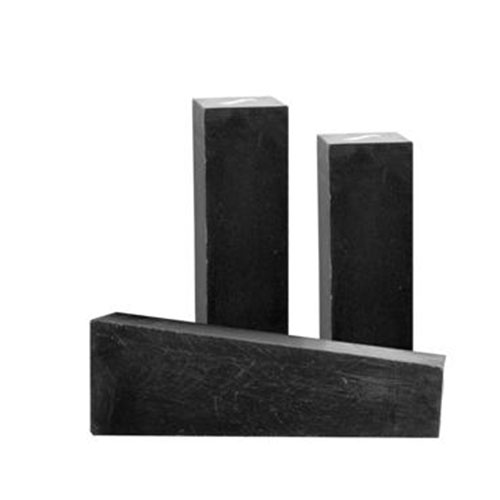Hello! Welcome to the official website of Located in Dashiqiao City!
Yingkou Taishuo Refractories Co., Ltd.
Contact: Mr. Chen
Tel.: 18804171010
Tel.: 0417-5828896
Fax: 0417-5828896
e-mail:18804171010@163.com
Address (business office): 1002-1, 10th floor, International Center, Dashiqiao, Liaoning
Rotary refining furnace is also called rotary anode furnace, as shown in Figure 1. It is mainly used for refining liquid crude copper. The operation cycle is generally divided into four stages: feeding, oxidation, reduction and casting. The product is anode copper for electrolysis. Rotary refining furnace is mainly used in large or extra large copper smelters.
The rotary refining furnace, smelting furnace and converter are arranged in the smelting workshop together. They are thermal equipment for refining crude copper into anode copper. The refining furnace is arranged behind the converter. At the other end of the smelting workshop, the raw materials come from the converter and are hot materials. Most of the fuels used in the refining process are liquid fuels. Only a few smelters use solid fuels and gas fuels.
Rotary refining furnace is mainly composed of furnace body, supporting device and drive and control system. The main supporting equipment includes combustion device, combustion supporting air system, oxidant, reducing agent, steam, compressed air, cooling water and process piping.
The rotary refining furnace is a horizontal cylindrical furnace body, and there are two kinds of heads for the horizontal round abutilon furnace body. The flat head end plate is connected with the cylinder by a compression spring; The dished head has no compression spring, the head and the cylinder are integrated, and the shell steel structure is used to manufacture the cylinder. However, it is difficult to lay bricks at the dished head, and the masonry technology requirements are high.

The cylindrical furnace body is provided with various orifices, such as furnace mouth, burner mouth, redox hole, sampling hole, copper outlet, smoke exhaust port, etc.
The difference between rotary refining furnace and fixed refining furnace is that there is no fixed molten pool (slag) line Slag erosion and molten metal erosion almost involve more than 2/3 of the inner surface of the furnace; As the furnace needs to rotate frequently, the masonry and the steel shell of the furnace body must be closely contacted to increase the friction between the masonry and the steel shell Overcome the rotating torque to maintain the stability of the exploration body. Therefore, the thickness of masonry shall be reduced as much as possible under the condition that the surface temperature of furnace shell allows.
The direct bonded magnesia chrome brick is a MgO-Cr2O3 refractory product made of high-purity magnesia and chrome concentrate with less impurities by common grinding and high temperature (above 1700 ℃) firing. Because of the high direct bonding rate of high-temperature minerals, it has strong slag resistance, high temperature strength and excellent thermal shock resistance; The rebonded magnesia chrome brick is a MgO-Cr2O3 refractory made of fused magnesia chrome sand by high-pressure molding and high temperature firing at 1800 ℃. Due to the higher direct bonding ratio, low apparent porosity and high bulk density, the re bonded magnesia chrome brick has higher high temperature strength and slag corrosion resistance than the direct bonded magnesia chrome brick. However, the thermal shock resistance of the combined magnesia chrome brick is poor. The main characteristics of MgO-Cr2O3 refractories used at the slag line of refining steel tank are: chemical erosion of slag, structural peeling caused by slag penetration, and erosion of molten steel slag at high temperature. MgO-Cr2O3 refractories have certain corrosion resistance to CaO-SiO2 slag with low CaO/SiO2 ratio (less than 2), but for CaO-SiO2 slag with high CaO/SiO2 ratio at high temperature, especially when Fe2O3 is high, the low eutectic temperature drops rapidly and the corrosion resistance is very poor.
Conventional fired refractories have a certain amount of micro pores and micro cracks between refractories. These micro pores and micro cracks can absorb and relieve part of the thermal stress at high temperatures, but they also bring some disadvantages, that is, they are very easy to be penetrated by smelting slag. Compared with iron and steel industry, non-ferrous smelting has a relatively low smelting temperature, but a large amount of slag. The slag is highly corrosive ferrite or silicate, with low viscosity, low interfacial tension, and strong wettability and permeability. Therefore, after the fired refractories are used in the non-ferrous smelting furnace, the penetration metamorphic layer is relatively thick, which is prone to loose structure, strength decline, peeling and other damages. The main reason for high consumption and low service life of nonferrous smelting refractories is that slag penetration leads to structural spalling.
free hotline
0417-5828896